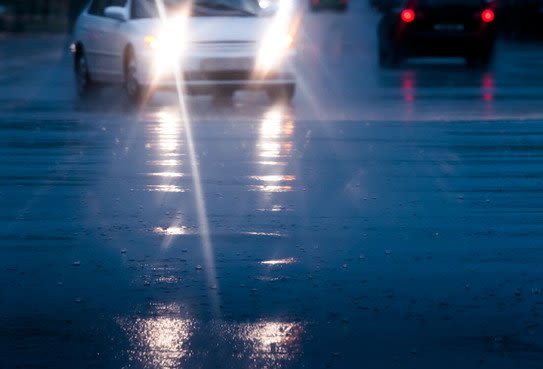
Here’s What Ohio Drivers Need to Know About Traveling in the Rain
On Thursday, November 1st, The Columbus Dispatch reported that a number of vehicular accidents occurred in central Ohio after roadways became slick and slippery from the rain that fell overnight and continued to fall throughout the day. As you probably have already experienced, driving in the rain can be rather difficult and it even becomes dangerous when the motorists traveling around you fail to adjust their driving to these types of weather conditions. Did you know that “on average, more than 950,000 automobile accidents [occur] each year due to wet pavement, resulting in approximately 4,700 deaths and 384,000 injuries” [Source: State Farm]?
Therefore, to help reduce the likelihood of an accident occurring when it is raining or if the roadway is wet from previous rainfall, below we share a few safety tips for you to implement while driving under these conditions [Source: State Farm].
Be alert and aware of the present weather conditions. Rather than allowing your mind to shift into autopilot or drift off into a daze when the roads are wet or it is raining, you need to be on high alert and paying attention to all that is going on around you. The fact is, many of the motorists traveling nearby to you will still be operating their vehicles as if the rain doesn’t present any type of hazard and will swerve in and out of lanes or drive at fast rates of speed. This type of behavior only increases the chances of them having their vehicle spin out of control and potentially crash into you. Therefore, it is your job to pay attention to everything and everyone so that you can dodge an accident if you see that one is about to occur.
Put your headlights on. If rain begins to fall or the clouds above look as though they are about to open up, put your headlights on to make yourself more visible to other drivers. Not only does the law require you to have your headlights on when driving in the rain, but many states advise their drivers to keep their emergency blinkers off so as to not confuse drivers with you being in need of immediate help when you really aren’t.
Hydroplaning is possible so be prepared for it. “When your tires lose traction with the road due to excess water on top of [it],” it hydroplanes which means “your vehicle will begin to slide uncontrollably.” I Drive Safely offers some helpful tips as to what you should do when your vehicle hydroplanes and you are encouraged to review these tips at your earliest convenience.
Don’t drive with cruise control on. State Farm says that when the roadways are slick and you have cruise control on, you increase your chances of having your vehicle spin out of the control. Cruise control can also cause your vehicle to go faster than the speed you have it set at in the event it hydroplanes.
Reduce your speed. Whether the speed limit sign says you are permitted to drive 55 mph or 65 mph, you don’t have to travel at that rate when it is raining. The fact is, “speed limit signs are designed for ideal conditions” which is the opposite of what is present when it is raining. Therefore, it is best you reduce your speed significantly when it is raining which will equate to you having more stopping time in the event traffic slows. Although it might take you longer to get where you need to go, at least you are reducing the chances of engaging in a collision.
Be cautious when changing lanes or merging into traffic. Many say that when it rains, motorists forget how to drive. And there may be some truth to that. The fact is, rather than being extra cautious, drivers will forget to put on their blinkers and even speed beyond the legal limits which only heightens the risk for you and the others traveling around you. Therefore, you are encouraged to check twice before merging into another lane to be sure it is safe for you to do so as other drivers may have merged into it after you initially checked to see if it was clear.
While Ohio drivers can’t prevent rainfall, they can prevent an accident by adjusting their driving when inclement weather is present.
If you’ve been involved in a wreck in Columbus, OH and you aren’t sure which parties you should be pursuing for compensation as the weather may have also played a role in causing the accident, it would in your best interest to contact Columbus, OH car accident attorney E. Ray Critchett. Our office can help determine who the liable parties are, the amount of compensation you are entitled to, and what forms of action you will need to take to recover this amount.
You can reach E. Ray Critchett, LLC at:1071 S. High StreetColumbus, OH 43206740-282-5393